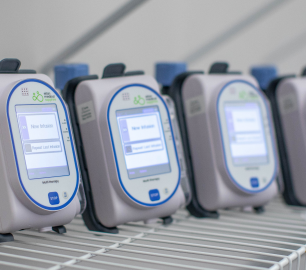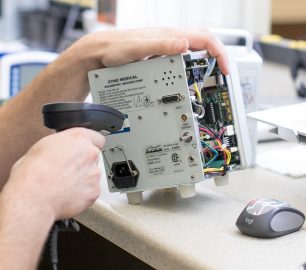By grounding your practice in NICA, FDA, and other regulatory guidelines, you can confidently navigate the complexities of infusion therapy, delivering exceptional patient care while maintaining efficient and compliant operations.
Medication Stability & Storage
Parenteral medications, including IV infusions, should be administered as soon as possible after preparation, ideally within an hour. This standard should be followed even if product labeling indicates a longer allowable storage duration based on stability data.
While FDA-approved labeling may support extended timeframes, such data typically reflect chemical and physical stability, not the risk of microbial contamination. The longer a prepared medication sits before administration, the greater the chance of microbial introduction during handling. Even if the medication remains chemically stable beyond four hours, the risk of infection outweighs the convenience of delayed use.
Medication Preparation Areas
To minimize the risk of contamination, parenteral medications should be prepared in a suitable environment. Although immediate-use medications do not require mixing in a laminar flow hood or pharmacy cleanroom, careful consideration must still be given to the location where preparation takes place.
Use this checklist to ensure your preparation area aligns with National Infusion Center Association (NICA) standards:
Preparation and Administration
Parenteral medications must be prepared using strict aseptic techniques to reduce the risk of contamination from nonsterile surfaces, particle pollution, or biological fluids.
Improper storage or handling during preparation can compromise the delicate protein structure of monoclonal antibodies, potentially increase the risk of infusion reactions or reduce treatment effectiveness.
Avoiding Contamination During Preparation
- Adhere to strict hygienic and disinfectant processes
- Sterilize all supplies before and after single patient use
- Be aware of critical sites that may pose as a threat to the sterility of the environment
Don’t let the following contamination spots fly under the radar:
- Rubber vial stoppers
- Needle/syringe tips, shafts, ribs, and hubs
- Tubing connections
- Dispensing devices
- Spikes
- Injection/tubing ports
Logs and Signage
Proper signage is essential throughout your infusion suite to maintain safety, compliance, and efficient workflow. Clear, visible signs help prevent cross-contamination, safety hazards, and regulatory violations.
These include:
Clean/Dirty
Clearly identify clean vs. dirty zones to prevent cross-contamination during medication preparation and equipment handling.
Dirty Utility
Designates areas where soiled equipment or waste is processed to ensure separation from clean areas.
Out of Service
Alerts staff that a piece of equipment or area is currently unavailable for use to prevent misuse or patient safety risks.
Medication Storage Only
Restricts specific storage areas for medications only, minimizing the risk of contamination or mix-ups.
Infection Control
Highlights hand hygiene expectations, and provides guidance on precautions to avoid illness or infection.
Oxygen In Use
Warns of oxygen presence to reduce fire risk and guide appropriate safety precautions.
Maintaining Up-To-Date Logs
- Cleaning and disinfection
- Temperature monitoring for medication storage
- Equipment maintenance
- Staff training and competency
- Incident reports
Consistent use of signage and logs supports a safe, efficient, and compliant infusion suite.
The National Infusion Center Association
Right Way Medical proudly supports the National Infusion Center Association (NICA) in its mission to serve as the leading voice for safe, accessible, and cost-effective infusion care nationwide. As an independent, non-profit organization, NICA is dedicated to protecting and advancing non-hospital infusion centers, enabling them to deliver high-quality care to vulnerable populations who depend on these essential services.
NICA’s Accreditation Program empowers organizations to thrive in an evolving healthcare landscape by providing a standardized framework that promotes consistent, high-quality, and cost-effective care. It drives improvements in the safety and delivery of infusion therapy, protects patients through objective, measurable standards, and elevates national awareness by recognizing Infusion Centers of Excellence.



